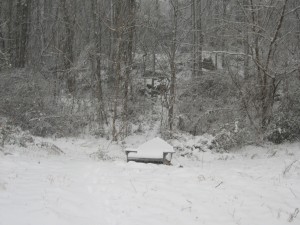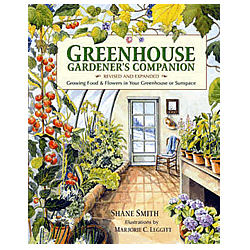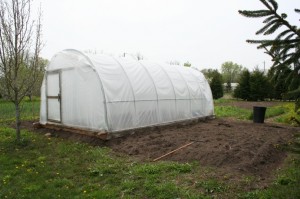Winter,for the passionate grower, summon images of frost riddled corpses of precious summer plants. It is usually a time for rebirth, a chance to revamp the errors of growing season’s past, and think for long periods of time on how to create a better garden.

However, there are wild eyed enthusiasts who never stop despite the season. The growing addiction is so profound that they refuse to bow to the chill. As crazy as it sounds, wisdom lurks in year round growing. A satisfaction evolves from not only besting winter despair, but owning the privilege of walking out on a snowy day and plucking something fresh for the belly.
Season extension techniques have been around since humankind first felt hunger. The trends and techniques have come a long way. It’s not necessarily an expert’s game; one only needs patience, basic growing skills, and a desire to see greenery and floral touches amongst the dead of winter.
Below are some of the tried and true techniques of season extension.
1) Greenhouses would be the first obvious choice. If money is not an issue, greenhouse kits can satisfy most hobbyists. Check out the Greenhouse Garden site to streamline the search for a compatible greenhouse or even how to build one economically from scratch. Also, check out Shane Smith’s thorough dissection of all things greenhouse in the excellent book, Greenhouse Gardener’s Companion.

For the more creative or thinner in change, one can build their own greenhouse with something as simple as 6 mil greenhouse plastic and PVC . These thrifty weather beaters are also known as hoop houses, and a small size hoop house will merely ding the spending pocket. Hoop houses are not the most efficient for heating in winter, but they can extend the fall season for a month or a little more.

For plans on how to build a hoophouse, check out Asheville greenhouse builder Gred Gross’s plans on How to Build a Hoophouse on The Organic Grower’s School resource page.
2) Floating row covers offer extension without the big cost or maintenance of a large structure. Heavy duty frost blankets like N-Sulate can protect the plant from severe cold, yet maintain85% light transmission. It also provides a barrier against pests. Mini hoophouses can be built and put over a plot by constructing something as simple as bendable wire for hoops, frost cover, stakes and Clip-Its plastic grommets.
3) Ground mulches provide extra insulation to the soil. Tests show that soil kept around 65 degrees F will withstand winter air temperatures dropping ten degrees without any loss in yield. Mulch selections vary with most being either cheap or readily available for free in backyards. Some of the better known include compost (like microbe rich McEnroe Compost) , black plastic mulch, nutrient rich alfalfa, leaves, and biodegradeable mulch paper.

Leave a Reply